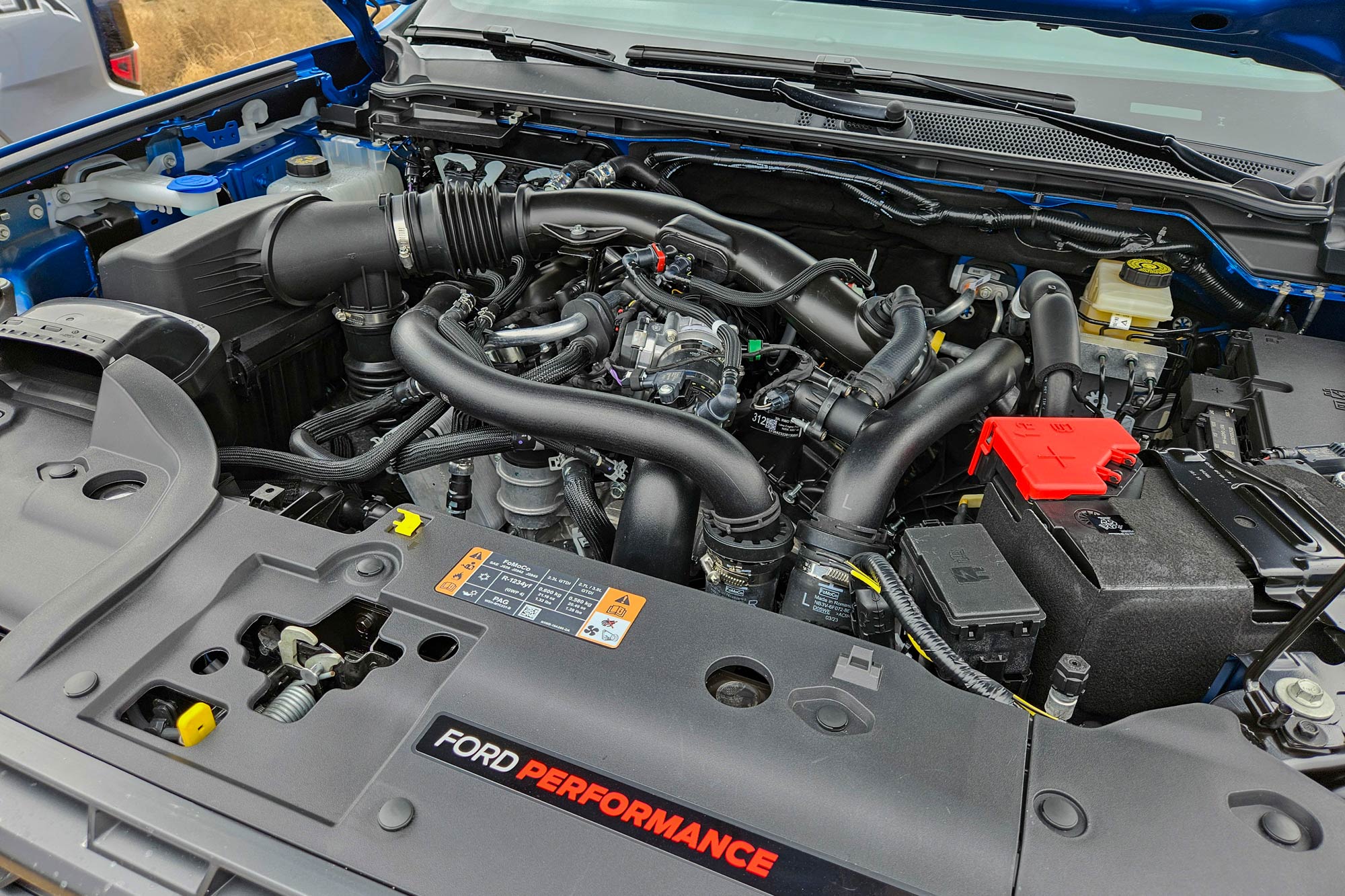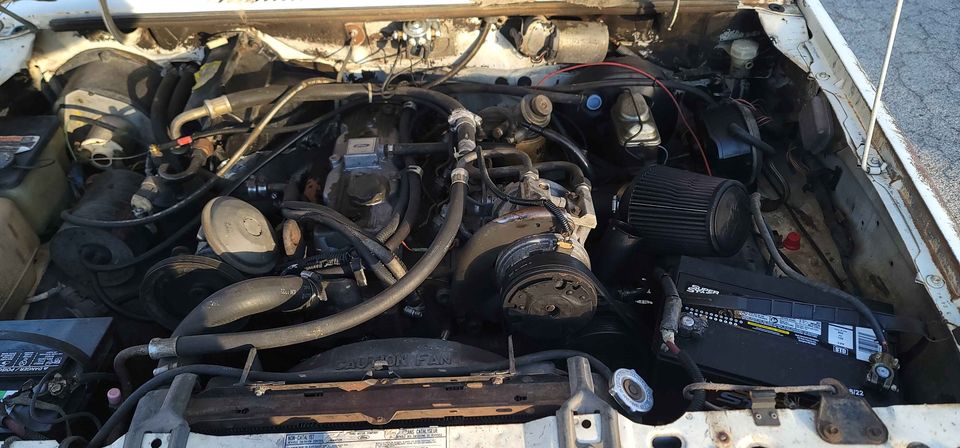Get to Know the Power and Reliability of the 2.2 Ford Ranger Engine for Any Job
Get to Know the Power and Reliability of the 2.2 Ford Ranger Engine for Any Job
Blog Article
Comprehending the Basics of Car Engines: Types, functions, and functions

Introduction of Auto Engines
A car engine acts as the heart of an automobile, transforming fuel into mechanical power to thrust it onward. This complex system makes up different parts that function in unison to guarantee optimal performance and efficiency. The fundamental operation of an auto engine involves the inner burning procedure, in which fuel and air are combined, sparked, and expelled to produce power.
The engine's design can substantially impact its performance, fuel efficiency, and discharges. Trick components include the cyndrical tube block, pistons, crankshaft, and camshaft, each playing a vital duty in the engine's general feature.
In enhancement to these parts, engines typically use various systems such as gas injection, ignition, and cooling down systems to boost efficiency and long life. Understanding the basic mechanics of car engines is necessary for diagnosing issues and doing maintenance, inevitably adding to the car's reliability and efficiency gradually.

Kinds Of Auto Engines
Car engines can be categorized into numerous kinds based on their layout, gas type, and functional concepts. 2.2 ford ranger engine. One of the most common groups include interior burning engines (ICE), electric engines, and crossbreed engines
Internal combustion engines, which can be more divided right into gasoline and diesel engines, operate by firing up a fuel-air combination to generate power. Gasoline engines are normally lighter and smoother, while diesel engines are a lot more fuel-efficient and offer greater torque.
Electric engines use electric energy stored in batteries to power an electrical motor, giving instant torque and absolutely no emissions during operation. As technology advances, electrical cars (EVs) are significantly coming to be preferred for their environmental benefits and lower running expenses.
Crossbreed engines integrate aspects of both internal burning and electrical engines, allowing for versatile power resources and boosted fuel effectiveness. They can operate in numerous settings, utilizing either the gasoline engine, the electrical motor, or both simultaneously.
Each type of engine has unique benefits and disadvantages, affecting their application in different lorry kinds and market sectors, from compact vehicles to heavy-duty vehicles. Comprehending these kinds is necessary for making educated decisions relating to car choice and performance assumptions.
Engine Functions Described
Understanding engine features is vital for comprehending just how vehicles run successfully. At the core of any kind of interior burning engine exists the fundamental process of transforming gas into mechanical power. This procedure begins with the intake stroke, where air and fuel are attracted into the combustion chamber. Following this, the compression stroke presses the air-fuel mix, increasing its temperature and stress.
The ignition takes place next, igniting the mixture and developing a quick growth of gases. This force drives the piston down during the power stroke, which ultimately converts into the rotational motion of the crankshaft. The exhaust stroke after that expels the invested gases from the chamber, giving way for a new cycle to start.
In enhancement to these main functions, engines also integrate systems that handle air conditioning and lubrication, making sure ideal operational temperature levels and decreasing rubbing in between relocating parts. This intricate interplay of features enables the engine to generate the power needed for automobile propulsion while maintaining performance and dependability. Recognizing these functions offers important understanding right into the intricacies of vehicle engineering and enhances the capacity to detect and attend to engine-related issues efficiently.
Secret Engine Attributes
Engine design incorporates numerous essential attributes that dramatically affect effectiveness, performance, and resilience. Among one of the most vital aspects is the engine setup, that includes inline, V-type, and flat layouts. Each setup impacts the engine's power, dimension, and equilibrium output, therefore affecting total car dynamics.
Another important attribute is the engine displacement, referring to the total quantity of all cyndrical tubes. Larger variations normally produce more power but might jeopardize fuel performance. Engine materials likewise play a critical duty; light-weight and high-strength materials, such as that site aluminum and magnesium alloys, enhance performance without including excessive weight.
The kind of gas injection system look these up used-- such as straight or multi-port shot-- impacts combustion efficiency and emissions. Turbo charging and turbocharging are functions that boost engine efficiency by requiring added air right into the burning chamber, increasing power outcome without significantly enhancing engine size.
Finally, the visibility of advanced engine management systems enhances fuel-air combination and ignition timing, adding to smoother procedure and much better fuel economy. Collectively, these functions define an engine's abilities, establishing the foundation for its performance and durability in an affordable vehicle landscape.
Maintenance Tips for Engines
Appropriate engine maintenance is vital for ensuring optimum performance and longevity, as overlooking routine care can result in considerable issues down the line. To maintain your engine properly, start with regular oil changes, typically every 3,000 to 7,500 miles, depending upon the kind of oil used. Fresh oil lubes engine components, reducing rubbing and wear.
In addition, checking coolant levels is essential to stop getting too hot. Make certain that the coolant is topped up and remains in great condition to keep efficient temperature guideline. Routinely check and change air and gas filters, as clogged filters can impede airflow and gas shipment, endangering engine efficiency.
In addition, take note of trigger plugs and ignition systems. Damaged or worn spark plugs can lead to misfiring and lowered efficiency. Examining the battery terminals and connections for rust is likewise vital, as a weak battery can impact engine starting.

Conclusion
In summary, a detailed understanding of car engines includes various types, functions, and essential attributes that dramatically influence vehicle performance. Interior Visit This Link combustion engines, along with hybrid and electric choices, demonstrate varied devices for energy conversion. 2.2 ford ranger engine. Acknowledging the necessary functions, such as intake and exhaust cycles, along with important engine functions like arrangement and fuel shot systems, furnishes cars and truck proprietors with the expertise required for effective upkeep and procedure, inevitably enhancing automobile durability and performance
An automobile engine serves as the heart of an automobile, converting gas right into mechanical energy to thrust it ahead. The fundamental procedure of an auto engine entails the internal burning process, wherein fuel and air are combined, fired up, and expelled to produce power.
Consistently change and check air and gas filters, as clogged up filters can prevent air movement and fuel delivery, endangering engine effectiveness. - 2.2 ford ranger engine
In recap, a thorough understanding of automobile engines encompasses numerous types, functions, and vital features that dramatically influence lorry performance. Identifying the vital features, such as consumption and exhaust cycles, together with crucial engine features like setup and gas injection systems, outfits auto proprietors with the expertise needed for efficient maintenance and procedure, inevitably improving car longevity and effectiveness.
Report this page